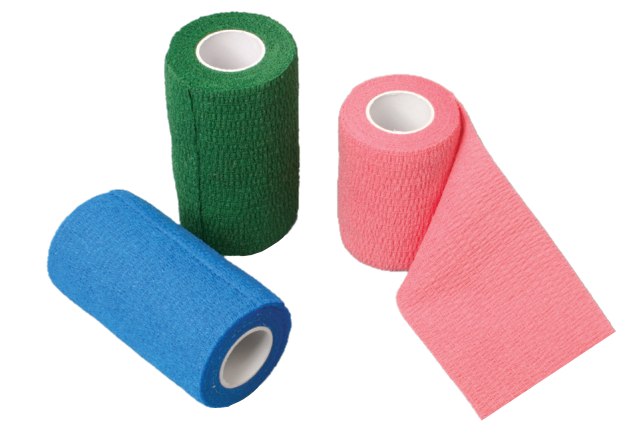
Cohesive Elastic Bandages (Non-woven)
As a result of new manufacturing technology, manufacturers are now able to produce cohesive elastic bandages that are thin, strong and stretchy. They provide an excellent alternative for heavy, bulky bandages for patients with smaller wounds and more superficial injuries. They also have the same safety features as traditional bandages.
| Ref. No.: | Size: | Qty Cs. : | Ctn size: |
|---|---|---|---|
| NMMD009001 | 1'' x 5y | 576 | 50x38x26cm |
| NMMD009002 | 2'' x 5y | 288 | 50x38x26cm |
| NMMD009003 | 3'' x 5y | 192 | 50x38x26cm |
| NMMD009004 | 4'' x 5y | 144 | 50x38x26cm |
| NMMD009005 | 6'' x 5y | 96 | 50x38x26cm |
A cohesive elastic bandage is a type of bandage that is used to provide support and compression to an injured area. It is made from a stretchy material that sticks to itself, making it easy to apply and remove. Cohesive elastic bandages are often used to treat sprains and strains, as well as other injuries that require support and compression.
There are many ways to use cohesive elastic bandages, and they can be used for a variety of purposes. Here are some of the most common uses:
-To support an injury: Cohesive elastic bandages can be used to support sprains, strains, and other injuries. They can help to reduce swelling and provide support to the affected area.
-To prevent injuries: Cohesive elastic bandages can also be used to prevent injuries. For example, they can be worn during physical activity to help support joints and muscles.
-To treat medical conditions: Cohesive elastic bandages can be used to treat various medical conditions. For example, they can be used to treat lymphedema by reducing swelling in the affected area.
If you have a wound that needs to be covered with a cohesive elastic bandage, it is important to know how to properly care for your bandages. Here are some tips:
-Keep the bandage clean and dry. Change it if it gets wet or dirty.
-Check the bandage regularly to make sure it is not too tight or too loose. -Do not remove the bandage unless instructed by your doctor.
-If the bandage becomes uncomfortable, loosen it or remove it and replace it with a new one.
1. How do I use them? Cohesive elastic bandages should be wrapped around the affected area snugly, but not too tightly. It is important to leave some space between the bandage and your skin so that you can still move your injured limb or joint. Be sure to wrap the cohesive elastic bandage in a figure-eight pattern around your limb or joint before securing it in place with the built-in adhesive closure.
2. How often should I use them? You can wear cohesive elastic bandages as often as you need to, but be sure to take them off at least once a day to allow your skin to breath. If you experience any pain or discomfort while wearing the bandage, remove it immediately.
3. Are there any side effects? If used as directed, there are usually no side effects from cohesive elastic bandages. However, if you experience pain, swelling, or redness around the site where you applied the bandage, remove it immediately and seek medical attention if necessary.
There are many cohesive elastic bandages on the market, each with its own set of features. It can be difficult to know which one is right for you. That's why we've put together this handy product comparison guide. We'll help you weigh the pros and cons of each type of bandage, so you can make an informed decision about which will work best for your needs. Cohesive elastic bandages come in a variety of widths, from 2" to 6". They also vary in terms of how much support they provide. Some are designed for light support, while others offer more robust support. The material used in the construction of cohesive elastic bandages also varies. Some are made from cotton or other natural fibers, while others are made from synthetic materials. Now that you know a little bit more about cohesive elastic bandages, let's take a closer look at some specific products on the market...